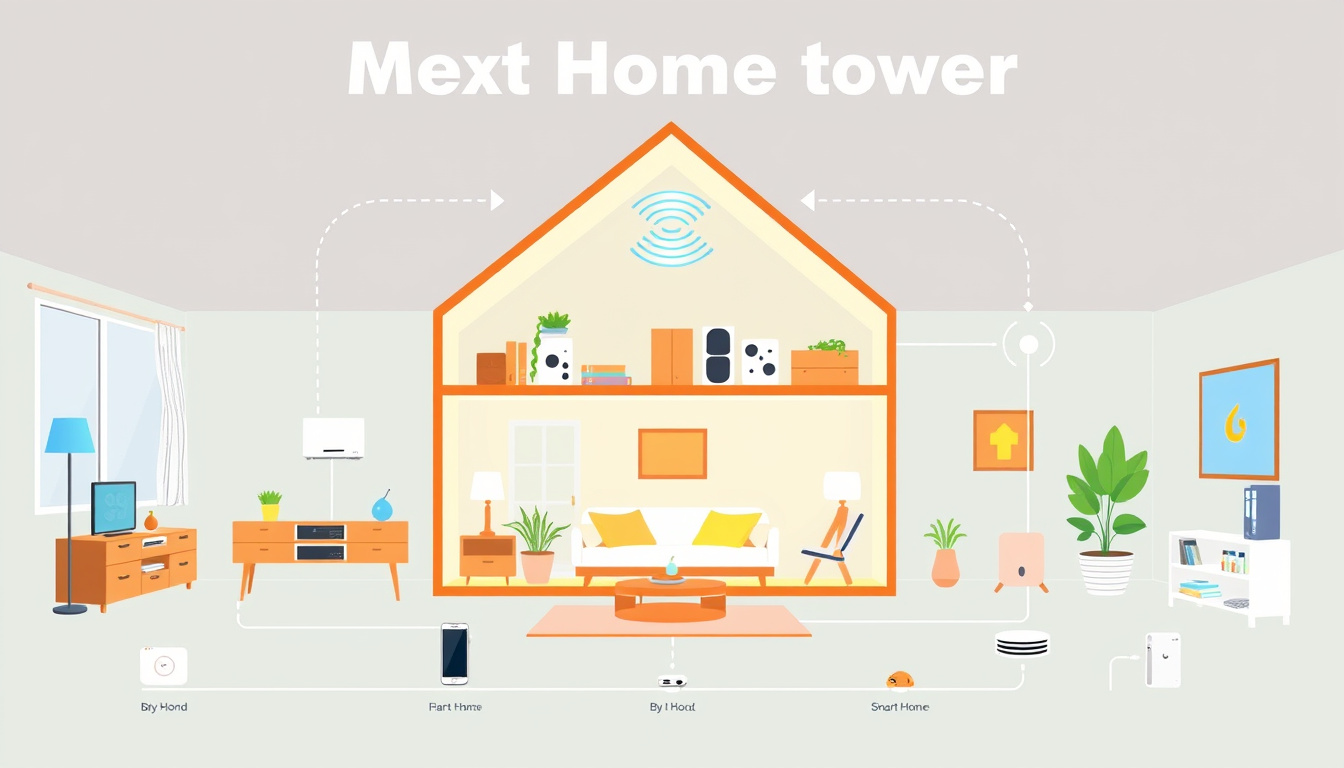As our homes become increasingly integrated with smart technology, the need for robust and reliable internet connectivity has never been more critical. If you’re looking to support a multitude of smart devices—from lights to thermostats—consider switching to a mesh network. This article will explore what a mesh network is, why it’s essential for smart devices, and how to set one up effectively.
What is a Mesh Network?
A mesh network is a system of interconnected nodes that work together to blanket an area with Wi-Fi coverage. Traditional routers can struggle to provide strong and consistent signals throughout larger homes, often leading to dead zones where devices cannot connect effectively. Mesh networks solve this problem by using multiple access points that communicate with each other, ensuring coverage even in hard-to-reach areas.

Benefits of Mesh Networks for Smart Devices
1. Enhanced Coverage
One of the primary advantages of using a mesh network is its superior coverage. Traditional routers have limitations on range, particularly in multi-story homes or spaces with obstacles. Mesh networks can cover vast areas with seamless connectivity, making them ideal for homes filled with smart devices.
2. Improved Connectivity for Smart Devices
Many smart home devices, such as smart plugs and light bulbs, primarily operate on the 2.4 GHz frequency. Mesh networks often support both 2.4 GHz and 5 GHz bands, allowing devices to connect more efficiently. This is especially valuable in environments with numerous devices that require stable internet access.
3. Scalability and Flexibility
Mesh systems are designed to be scalable. You can add additional nodes as needed without extensive rewiring or reconfiguration. This adaptability allows you to expand your network as you add more smart devices or as your connectivity needs change over time.
4. Simplified Management
Most modern mesh systems come with user-friendly apps that allow you to monitor and manage your network easily. For instance, users can receive notifications if a device loses connection, which can be critical in ensuring that all of their smart devices remain operational.
Setting Up Your Mesh Network
When transitioning to a mesh network to support your smart devices, consider the following steps:
1. Choose the Right Mesh System
Select a mesh system that meets your home’s requirements. Brands like TP-Link Deco, Netgear Orbi, and Google Nest Wifi are popular choices that cater well to smart devices, providing both 2.4 GHz and 5 GHz bands. Pay attention to the supported smart home protocols like Zigbee or Z-Wave if you’re considering devices that use these technologies.
2. Plan Your Network Layout
Determine where to place your mesh nodes for optimal coverage. It’s often best to position them in areas central to your smart devices to maintain strong signals. This layout will reduce the risk of connectivity issues across different parts of your home.
3. Configure Your Network Settings
After installing your mesh nodes, use the accompanying app to configure settings. Ensure that devices requiring 2.4 GHz connectivity can access the network seamlessly. Some users find it helpful to temporarily disable the 5 GHz band during set-up to ensure all smart devices connect properly.
4. Test Connectivity
Once configured, test the connection of your smart devices. Ensure all devices communicate effectively with your network. If you encounter issues, consider using the network’s diagnostic tools, often found in the app, to identify and solve problems like weak signals or overloading.
5. Regular Maintenance
Keep an eye on your network’s performance and consult the app regularly to manage bandwidth usage and monitor device connectivity. Good mesh systems will notify you if devices disconnect, allowing you to take prompt action.
Conclusion
Switching to a mesh network presents an excellent opportunity for anyone looking to enhance their smart home setup. By providing greater coverage, improved connectivity, and easier management, mesh networking solutions can transform your home into a genuinely connected environment. Investing in a quality mesh system now can ensure that your smart devices will operate smoothly and effectively, no matter how many you add in the future.
By understanding your needs and carefully setting up your network, you can maximize the benefits that smart technology has to offer while enjoying a seamless home experience.



